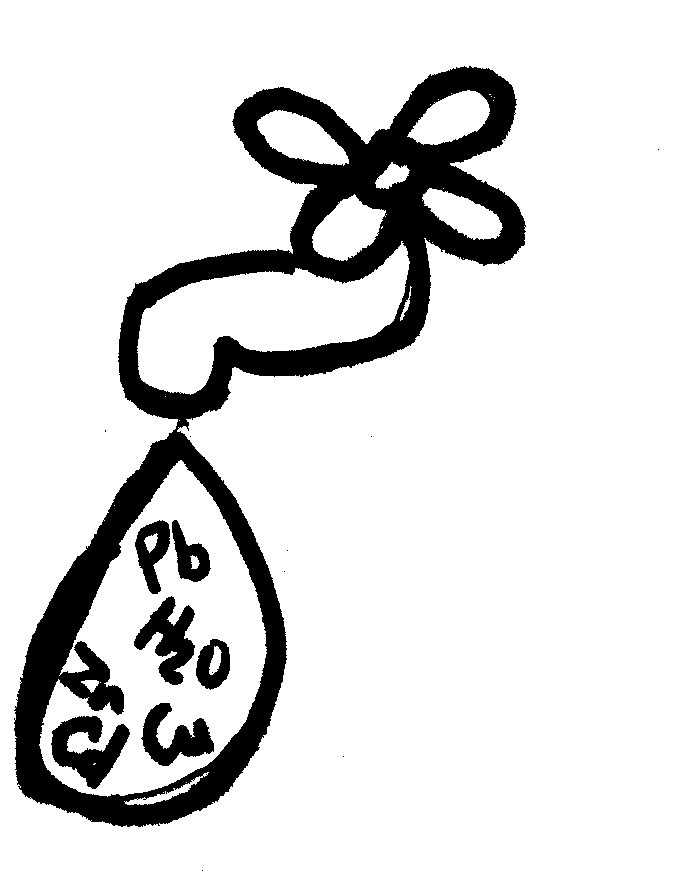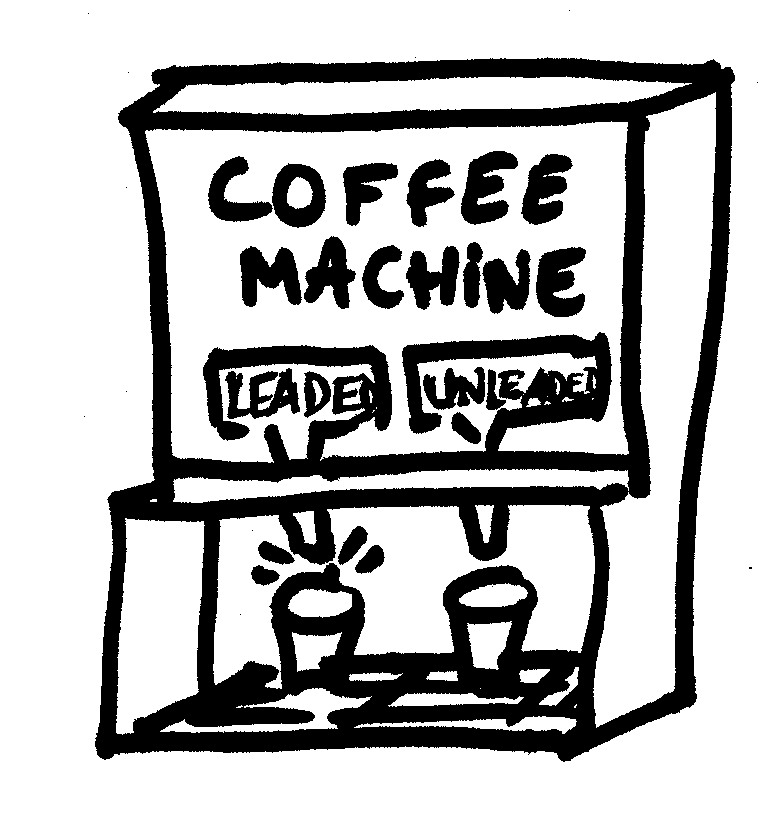|
|
|||||||||||||||
|
Incorporating Lead Aware Times ( ISSN 1440-4966) and Lead Advisory Service News (
ISSN 1440-0561) The Journal of The LEAD (Lead Education and Abatement Design) Group Inc. |
|||||||||||||||
|
About
Us |
bell
system lead poisoning |
Contact Us
| Council
LEAD Project | egroups | Library
- Fact Sheets | Home
Page | Media Releases |
|||||||||||||||
|
Lead in
Drinking Water in Australia Fact sheet written and illustrated by Patricia Parkinson, Lead Advisory Service Australia
The main concern, however, arises out of the common use of lead based solder on brass fittings and copper pipes up until as recently as 1989. As a result of corrosion, there is a potential for the lead to leach into the water after prolonged contact. It is therefore the consumption of first flush water – the first cup of tea in the morning – which presents a hazard. This was demonstrated in a study conducted by Dr Brian Gulson, in 1992 in the Sydney suburbs of Turramurra, Burwood, and Epping and in Broken Hill in the far west of New South Wales. The study revealed that the lead levels in first flush tap water in many cases exceeded the acceptable level. Further studies conducted in Perth (WA) in 1993 on cold water from kitchen taps have indicated that 5% of samples were above the acceptable lead level as defined by the National Health and Medical Research Council (NHMRC), 2% were above the limit for cadmium and 12% above the limit for copper. The maximum acceptable level of lead (and other heavy metals) in drinking water has been established by the NHMRC in the "Australian Drinking Water Guidelines" at 0.01 mg/L (lowered from 0.05 mg/L). And yes, as your plumber should be able to tell you, the use of lead based solder on drinking water pipes has been banned in Australia since 1989 (see box). However, there is virtually no monitoring of the water quality at the kitchen tap. Water quality monitoring takes place before the water reaches your home, with the exception of the occasional monitoring at the garden tap. This is not going to tell you whether the water in your kitchen is safe after travelling in your plumbing system.
What can you do about it? Here are some steps you can take to protect yourself and your family if you suspect that lead based solder was used in your home:
If your drinking water comes from a rainwater tank… You should definitely have your tap water tested for lead by a laboratory. Phone the Global Lead Advice and Support Service - +61 2 9716 0132 or within Australia 1800 626 086 - or purchase a Kit from http://www.leadsafeworld.com/shop/ OR print form for mail order or fax with your name, Visa or Mastercard details, postal address, email address and phone number, to purchase a DIY Home Lead Assessment Kit. See Do-It-Yourself-Lead-Safe-Test-Kits so you can specify if you need a Basic 2-sample Kit $120 or $100 for LEAD Group members, 2-sample Water Kit $100 or $85 for LEAD Group members or the Comprehensive 8-sample kit for $275 or $250 for LEAD Group members. Become a member of The LEAD group Inc. at http://www.leadsafeworld.com/shop/ (which also entails emailed notification when a newsletter is web-published and entitles you to discounts when you purchase any of our DIY-sampling laboratory lead analysis kits) Membership is only $10 per annumThe Kit provides sample bottles and instructions for you to collect water sample/s (or roof paint or flashing sample/s etc), and the price covers the cost of the laboratory analysis for lead. One quarter of the tank water samples tested in a Victorian study contained more than the acceptable drinking water level of lead. Lead contamination of tank water could be the result of lead paint or flashing on roofs, lead paint or soldering in the guttering, soft soldered tanks or lead fallout from air pollution including from smelting, mining, lead paint removal, vehicle emissions and wood smoke, lead washers from corrugated roofing (which sometimes fall into the tank), overflow from hot water systems and evaporative air conditioners. Go to the department of Human Services Victoria website for a pamphlet on maintenance of tanks, entitled "Your Private Drinking Water Supply" also see Rainwater use in urban communities and www.health.vic.gov.au/environment/water/tanks.htm . Government policies on lead in drinking water in Australia The recommendations of the National Strategy for Reducing Lead Exposure in Australia, include to:- "implement a pilot program for testing lead in first flush drinking water, rainwater tanks and drinking fountains; conduct education programs to inform home handy persons of the dangers in using lead solder in plumbing and review drinking water guidelines for lead in context of an overall lead reduction strategy." Contact your state health department to ask for an update on this policy and for information on the education program in your state.
References:
|
|||||||||||||||
The LEAD Group Inc. Fact Sheet Index |
|||||||||||||||
|
NSW
Lead Reference Centre and NSW Government Publications On this site
|
|||||||||||||||
|
Run By |
|
|
|||||||||||||
|
Proceeds
from our DIY Home Lead Assessment kit sales go towards the Keeping Australian Lead Out of Leaded Petrol Initiative. |
|||||||||||||||
|
About
Us |
bell
system lead poisoning |
Contact Us
| Council
LEAD Project | egroups | Library
- Fact Sheets | Home
Page | Media Releases |
|||||||||||||||
|
Visitor
Number
Last
Updated 26 November 2014
|
|||||||||||||||

 In Australia,
little is heard about drinking water as a source of lead poisoning, probably
because – unlike Europe and the US – lead pipe plumbing is not
widespread in Australian homes. The late Lead Reference Centre (a section of
NSW Environment Protection Authority devoted to lead policy and education
from 1997-9) has not even devoted a fact sheet to the subject. Nevertheless,
it may be an issue worth investigating if your home was built prior to the
1930’s, when copper pipes replaced lead pipes.
In Australia,
little is heard about drinking water as a source of lead poisoning, probably
because – unlike Europe and the US – lead pipe plumbing is not
widespread in Australian homes. The late Lead Reference Centre (a section of
NSW Environment Protection Authority devoted to lead policy and education
from 1997-9) has not even devoted a fact sheet to the subject. Nevertheless,
it may be an issue worth investigating if your home was built prior to the
1930’s, when copper pipes replaced lead pipes. 

